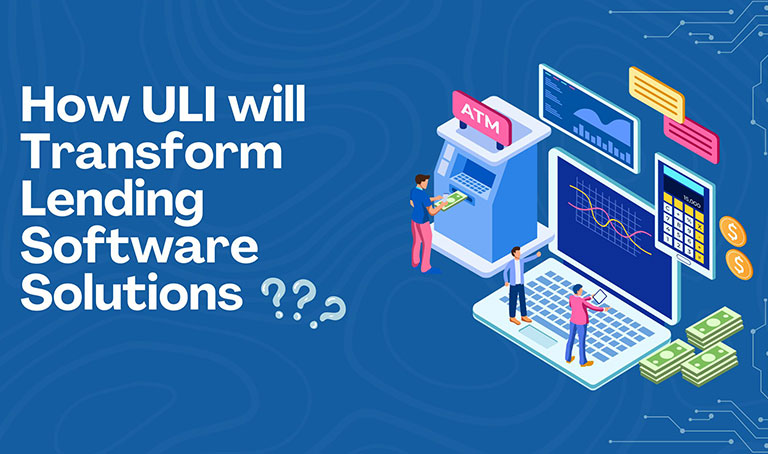How ULI will Transform Lending Software Solutions
Updated On : August 2024
The Reserve Bank Innovation Hub (RBIH) has introduced a new initiative in the Indian financial landscape - the Unified Lending Interface (ULI). This digital public infrastructure (DPI) platform is going to revolutionize the lending space, transforming the payments ecosystem.
ULI stands out as a key player in addressing the credit needs of no-file or thin-file borrowers due to its innovative design, robust functionality, and seamless integration of various data sources. This distinguishes it from other lending systems such as the Open Credit Enablement Network (OCEN) and the proposed lending platform of the Open Network for Digital Commerce (ONDC).
What is ULI?
The Unified Lending Interface (ULI) is an innovative digital platform that aims to make applying for a loan easier and more accessible to all. Developed by the Reserve Bank’s Innovation Hub (RBIH), ULI enables a seamless, consent-based transfer of digital information. ULI was specifically developed to streamline the cumbersome process of lending. The data that is crucial for loan approval is entrusted to different entities scattered throughout governmental databases, banks, and credit bureaus.
This fragmentation can significantly slow down the loan approval process. ULI addresses this by collecting data from these sources into a seamless system of channels, making it easier for lenders to assess credit applications more quickly and effectively. The end results? Approval times are cut in half, while both paperwork and costs are dramatically reduced.
How ULI will Revolutionize the Lending Space
- Simplified Underwriting of Credit
ULI enables lenders to pull in borrower’s financial and non-financial information already digitized from various points with their consent. This substantially reduces the time and complexity needed in credit assessment, especially for entities that provide lending software solutions.
- Quicker Loan Disbursement
By automating the loan approval process, ULI can help speed up the lending process, resulting in faster access to credit for borrowers.
- Increased Financial Inclusion
With easier access to credit information, lenders can serve a wider range of borrowers, including those located in remote regions who previously may have found it challenging to access formal credit due to a lack or absence of documentation.
- Data- Driven Decision Making
ULI provides lenders with a thorough understanding of the borrower's financial position and risk state. This permits sensible lending decisions, minimizes credit risk, and results in loans being paid back.
- Lower Costs
As credit risk is reduced, ULI can actually lower lenders operational costs and enable them to offer more competitive lending rates.
- Greater Transparency
The centralized platform enables transparency by permitting even the borrower to see their loan application status in real time.
How it Works
Today, Finacle eBanking is one of the most sophisticated digital banking solutions available, with just about every function conceivable included such as:
- API Integration
Lenders can access borrowers’ data from ULI’s unified API, which simplifies the integration process with data providers. - Consent-Based Data Sharing
Before any data can be provided to lenders, the borrower must give consent. - Data Sources
ULI is able to tap a wide variety of data sources, such as bank statements, credit bureau reports, land records, rental history, and other relevant information necessary to make an underwriting decision.
ULI is expected to change the Indian lending landscape by creating a more inclusive, efficient, and transparent credit system that benefits all, especially the underserved segments.
Advantages of ULI
- Faster Loan Approvals
ULI will greatly shorten the time it takes to approve a loan, benefiting those living in rural areas where credit has traditionally been slow. - Simplified Process
By digitizing data and reducing paperwork, ULI makes the entire loan application procedure simple and accessible for everyone. - Increased Access to Credit
ULI will serve the demand for credit that currently goes unmet, particularly among the agriculture industry and small businesses. - Enabling Transparency
The platform ensures transparency by showing users exactly how their information is used, establishing credibility in the borrowing process.
ULI: India’s Next Digital Revolution
Indian central bank governor Shaktikanta Das has placed ULI at the heart of India’s next giant leap forward as far as digital infrastructure is concerned, along with JAM (Jan Dhan, Aadhar, Mobile) and UPI. Just as UPI changed the face of digital payments, ULI seeks to open up access to credit, creating a more inclusive financial ecosystem.
ULI is not only about speeding up loans; it’s about making financial services available to everyone, from farmers in remote areas to small business owners in big cities. By removing barriers to credit, ULI has the potential to spur economic development and financial inclusion throughout the country.
The Nelito Systems FinCraftTM Lending Management Solution is a comprehensive, integrated, customizable, cutting-edge solution designed to manage the complete loan lifecycle. The comprehensive loan management solution facilitates banks and financial institutions to automate the procedures for achieving cost savings and a better customer experience. To learn more about it, write us at marketing@nelito.com or visit us at Nelito.com.


Comments :